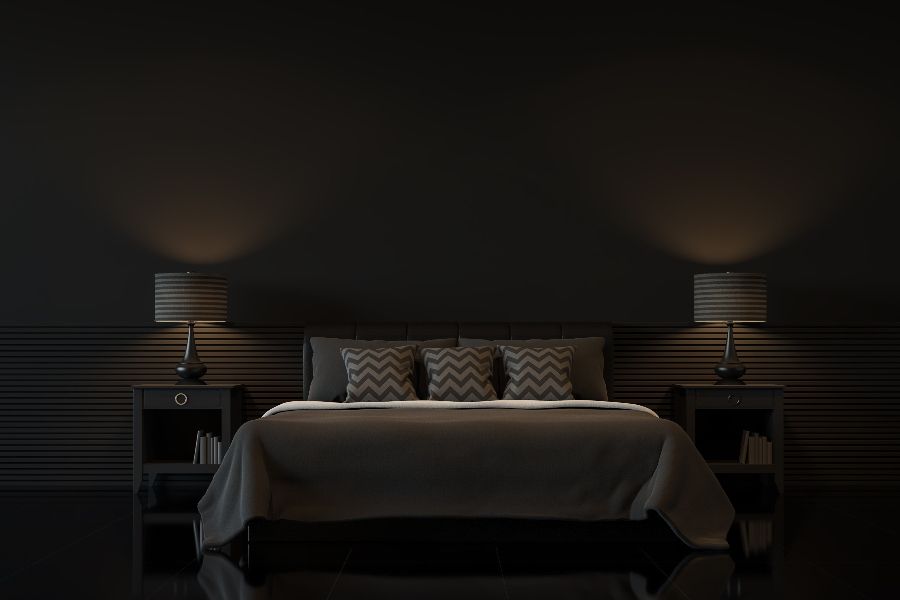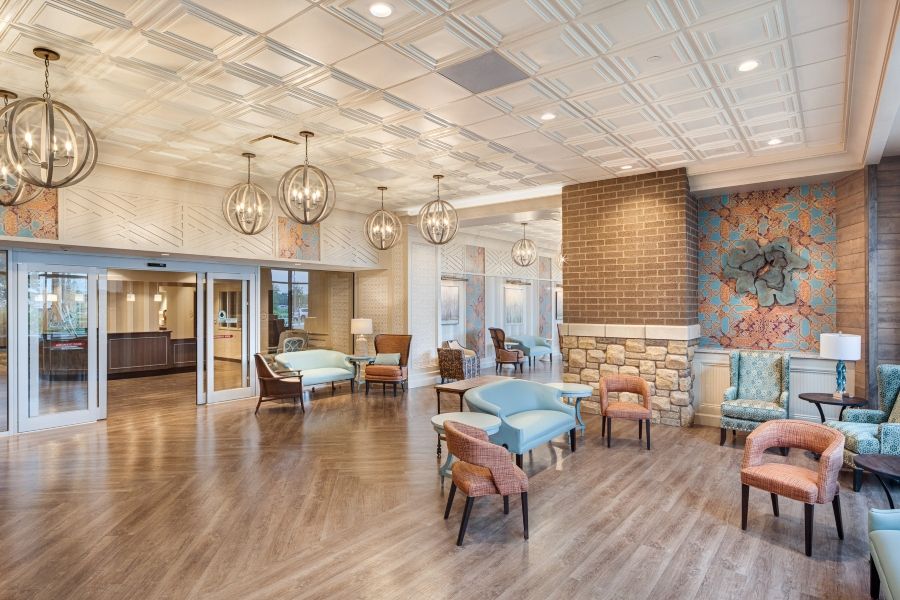Creating a Darker Bedroom for a More Restful Sleep
When discussing sleep, lighting—and one’s perception of it—plays an incredible role. If you are familiar with circadian lighting, remember the mantra behind it: “Brighter days and darker nights,” and darker nights means darker bedrooms: pitch black bedrooms. How restful of a sleep one receives depends upon a room’s ability to shelter them from extraneous light, and if even a little bit finds its way, be it through interior or exterior sources, that can be a problem.
Whether residential, hospitality, healthcare, the goal remains the same. However, achieving that goal can take one down multiple pathways, which we will look at here.
Blackout Shades (with a Twist)
Looking at a study done by Northwestern University, even a little bit of light exposure in the evening can be enough to agitate someone. Eyelids aren’t the perfect light blockers one might think they are, and so, external intrusions from streetlights or vehicle traffic can be all that it takes. In urban areas, these stimuli are also potentially joined by lights from other buildings or signage scattered throughout the city.
Even in more rural areas, residents are not entirely free from disruption of external lighting. Anyone who has been outside during a full moon can attest to the illumination that floods the landscape. According to a study done by Harvard Health, that excess moonlight can cause people to lose up to 90 minutes of sleep each night while it is present.

Perfectly fitted blackout shades are a special touch only professionals can provide, and its one most people do not realize they need until they try their hand at it. Through extensions or custom fits, a professional can provide a tailored solution that will create a perfect seal to keep all external light absent from a room.
The twist comes with the addition of motorized/automated shading solutions to the mix. When set on a specific schedule, the bad light stays out in the evening, while sunlight can still filter in the next morning for a more natural awakening. A whisper quiet motor will further ensure that sleepers remain sleeping while the technology does its thing.
If you’re ever unsure about how much light is in a room, stand there at night and hold out your hand 24 inches away from your face. If it’s still visible, even just barely, there’s too much light.
Darker, Cooler Colors for Easier Rest
There is no simple answer as to whether a dark-colored room is all-around better than a light-colored room, but one thing that can be agreed on is color’s influence on sleep. A light room can be more therapeutic, but if it is too light, it may interfere with someone trying to go to sleep at night. Going a little darker helps the body clock settle into a better sleep routine by allowing it to synchronize with the external environment.

Dark and luxury, blue bedroom with moving wall panels and double bed, panorama
When coloring a room’s walls with dark blues and magentas, they act as the color palette for nighttime skies, and the body responds. Blue in general is a highly recommended color for spaces where sleep is intended, as even in brighter tones, its invocation of a cooler environment helps the body and mind settle, again like how the coming of night usually results in a noticeable temperature drop.
Because dark, dark color palettes in a room have a potential to be less therapeutic, it is important to find balance and to ascertain the intended function of a space. For instance, coloring a hospital room with incredibly dark tones in the interest of allowing patients to sleep better at night may not be the best choice when they are potentially spending all day in the room.
For bedrooms and hotel rooms where the only intention of said area is to give residents and guests a better night’s sleep, however, darker color tones are the way to go.
Be Smart with Smart Technology
All this effort is for naught if the disruption is coming from inside room. With how much technology exists in buildings nowadays, it is inevitable that some of it will end up in the bedroom. Some of it might even be beneficial to have in the bedroom. What design and technology professionals need to be cognizant of is how much indoor light pollution these devices bring.
Even a single LED on an air purifier’s interface can throw off enough light to disrupt sleep cycles. The simple solution is to keep technology out of the bedroom. However, anything with a sleep mode works as well. Be forewarned, though, as there are still many devices that have standby lighting while in this setting, and it will take a little bit of legwork to figure out what will truly go dark.

Though, once you have that perfectly dark space, the question then becomes: how does someone navigate safely if they wake up in the middle of the night with no light? Hotels will often have dimmed, motion activated floor lights to assist in non-disruptive nighttime illumination, and while that is possible to achieve in a residential setting with some set-up, there are other options that can work as well.
A set of linear lights, for instance, can be controlled from a client’s phone (which when set to night mode will provide minimal disruption when activated). Touch activated lamps can also assist in this setting, barring that the dimness and color temperature of light in place is appropriate (low and warm).






